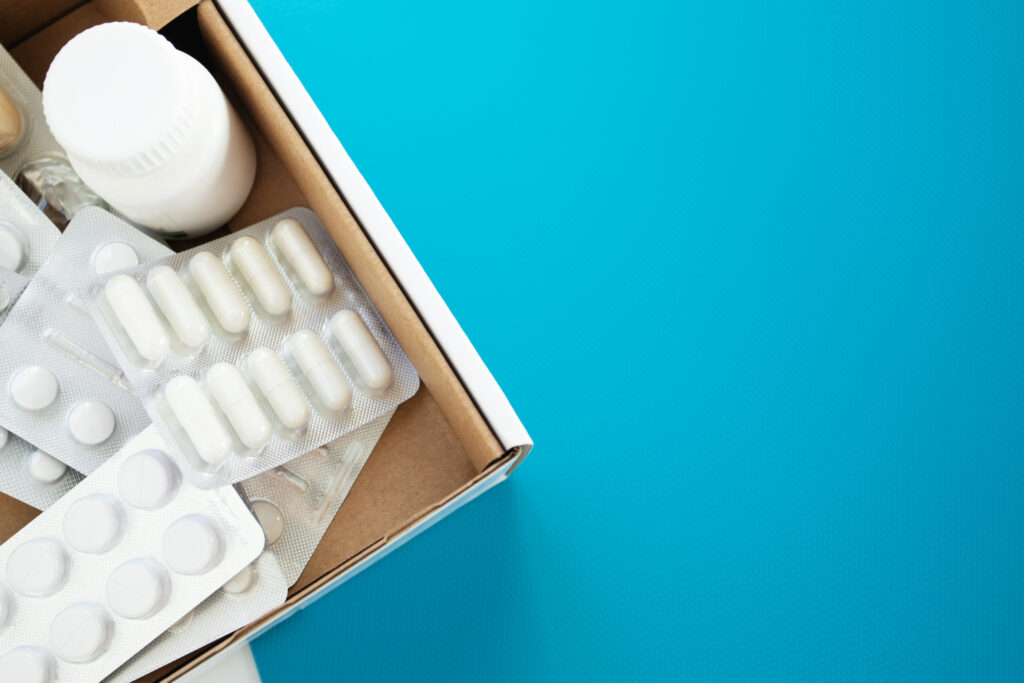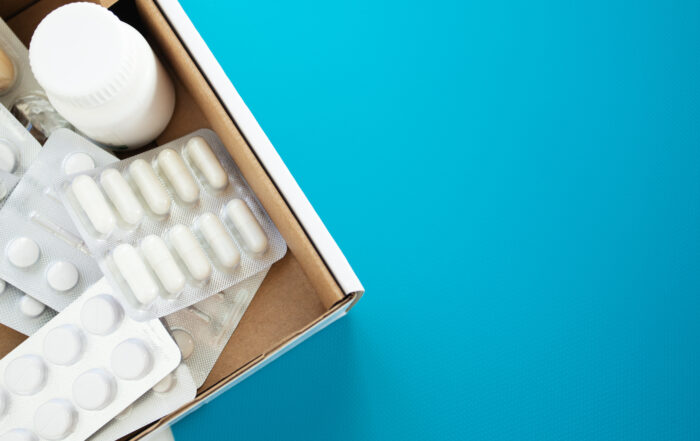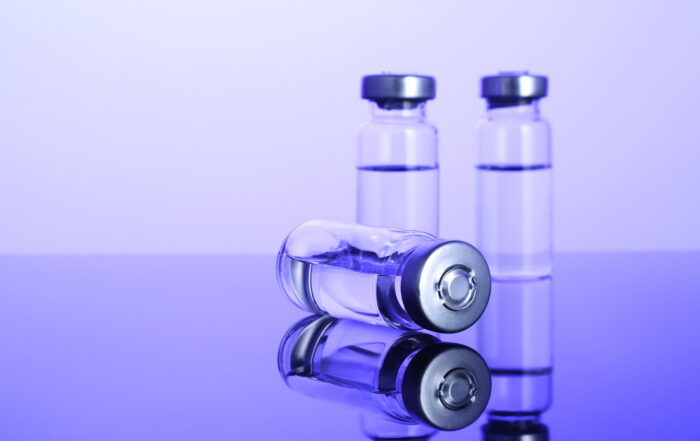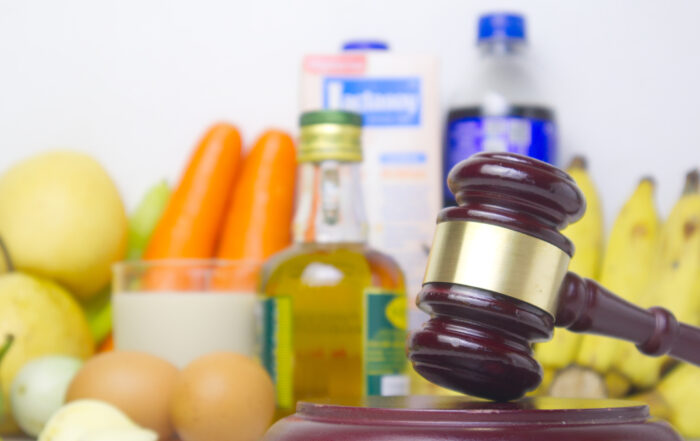
Direct-to-Patient Sample Distribution in the Time of COVID-19
By John C. Petrolino & John Maher
The Public Health Emergency (PHE) allowed for a temporary abeyance of the Prescription Drug Marketing Act’s (PDMA’s) requirement that drug samples be provided to physicians prior to subsequent distribution to patients. The ability for physicians to direct drug companies to provide samples directly to patients leverages accepted telehealth platforms while maintaining necessary oversight of the physician as learned intermediary. Defining compliant sample distribution pathways that protect patients and their personal information assures technological solutions can persist beyond the expiration of the PHE.
The COVID-19 pandemic strained global healthcare systems in a way that had not previously been seen in the modern era. In the face of unprecedented demand to create new pathways to allow patients and healthcare providers continued access to healthcare resources, the declaration of the Public Health Emergency by the U.S. Department of Health and Human Services (HHS) on January 31, 2020 opened the door more widely to, among other things, utilization of telehealth services.
As the use of these services proliferated, a secondary benefit of the PHE was realized in the temporary suspension of the PDMA’s requirement that drug samples be provided only to licensed healthcare providers with the capacity to prescribe the drugs in question, thereby allowing drug samples to be delivered directly to patients.[1] By removing the federal requirement that samples need to be physically delivered to a healthcare provider’s office before getting to a patient, the benefits of drug sampling—to assess safety and efficacy in a given patient prior to prescribing a full course of therapy—were preserved during a period when many offices were closed to patient visits. However, despite the availability of this pathway, experience confirmed that many pharmaceutical companies were reluctant to distribute samples directly to patients. Novel pathways can understandably create hesitancy. Notwithstanding the U.S. Food and Drug Administration’s (FDA’s) clear removal of the previous regulatory injunction on shipping pharmaceutical products directly to patients, many pharmaceutical companies could not overcome perceived unknown risks in the direct-to-patient novel sampling pathway, particularly where pharmaceutical manufacturers long ago accepted the restrictions as marketing dogma.
In order to appreciate the cautious approach taken by pharmaceutical companies who distribute samples, it is important to understand the regulatory landscape that frames drug sample distribution. The provision of drug samples to healthcare providers and patients is governed by various federal and state laws, most directly the PDMA. The PDMA governs the interstate commerce aspect of sample distribution, while state laws and regulations govern how healthcare providers may distribute to patients as a function of the practice of medicine.[2]
Prior to the implementation of the PHE, the PDMA only allowed “drug samples . . . [to] be distributed by a manufacturer or its authorized distributor of record to a practitioner licensed to prescribe the drug that is to be sampled.”[3] This was an effective prohibition on direct-to-patient (DTPt) distribution of samples, which rightly served to ensure that the learned intermediary controlled who received prescription therapy. However, in the age of telehealth, the need for the physical transfer of samples from healthcare provider to patient seems anachronistic, particularly when full courses of the very same therapy can be prescribed as a result of a telehealth visit.
As such, the suspension of enforcement of the de facto prohibition on DTPt samples seemed to further the legitimate objective behind drug sampling—determining if a particular therapy will be effective for a particular patient before a full course is prescribed, ostensibly saving precious healthcare dollars from being spent where no benefit is likely to be seen. Given that drug sampling is a promotional tool leveraged by most pharmaceutical manufacturers, it would seem that an opportunity to continue sample fulfillment during a time of restricted healthcare provider office access would be extremely attractive.
Given the abeyance of the PDMA restriction on DTPt sample distribution, companies turned their scrutiny to the potential impact of the 1996 Heath Insurance Portability and Accountability Act (HIPAA) strictures. Pharmaceutical manufacturers may be unfamiliar with the nuances of HIPAA for the simple reason that, in the large majority of instances, it simply does not apply to their activities. Per the statute, HIPAA only applies to defined “covered entities” and “business associates,” definitions within which pharmaceutical companies generally do not fall.
To wit, the definition of “covered entities” encompasses those “healthcare providers” who provide medical or health services commonly furnished in physicians’ offices and rendered without charge or included in the physicians’ bills.[4] Manufacturers and sample fulfilment providers have never been considered covered entities because distributing samples to healthcare providers is not considered to constitute the provision of medical services. Samples, rather, are provided to patients by healthcare providers incidental to the physicians’ course of diagnosis or treatment of an injury or illness provided in the physicians’ offices.[5]
Similarly, the definition of “business associates” are those parties who, “on behalf of such covered entity,” provide a covered function or activity regulated by HIPAA that involves the use of personal health information to help the covered entity carry out its health care activities and functions.[6] According to HHS, business associate functions and activities include: claims processing or administration; data analysis, processing, or administration; utilization review; quality assurance; billing; benefit management; practice management; and repricing.[7] In essence, to be a business associate, the entity in question must be providing a service for the covered entity (that the covered entity could provide directly to its patients) or the entity must be providing a service to the covered entity that involves the use of protected health information. Manufacturers and sample fulfilment providers have, historically, never been considered business associates of the healthcare providers requesting drug samples because sample distribution is not a covered function (as noted above) and, previously, did not rely on the personal information of a patient.
However, in the context of DTPt sample distribution, this equation seems to change on its face because the sample fulfilment provider is now using personally identifiable information (PII)—e.g., name and address—in order to provide samples to patients on behalf of the manufacturer and at the direction of the healthcare provider. This potentially brings those parties within the ambit of the “business associate” definition. While the distinguishing factors could reasonably be seen to change the outcome, it is an entirely defensible position to state that the use of PII on behalf of the manufacturer for sampling purposes does not result in a business associate relationship.
As noted above, and per the definition of “business associate,” the manufacturer and sample fulfilment provider remain absent from the covered function, which would be necessary to implicate HIPAA applicability, i.e., the healthcare provider’s provision of medical or health services furnished in their offices. Despite the facial inapplicability of HIPAA to manufacturers and sample fulfilment providers in the DTPt continuum, additional risk mitigation measures could include establishing a process that: a) limits the flow and exchange of patient information to a HIPAA minimum-necessary standard; b) limits access and—to the extent possible—isolates patient data to confined components of electronic sampling platforms; c) electronically restricts manufacturer access to patient data (generally through the use of a third-party fulfillment agent); and d) for manufacturers who are still concerned that DTPt programs might bring manufacturers or sample fulfilment providers within the reach of HIPAA, require that healthcare providers (prior to sending patient data to a sample service agent) attest that the healthcare provider has the necessary authorization and/or consent to provide patient data to the sample fulfilment provider (as a non-covered entity).[8]
As healthcare providers of all stripes embrace the advances in science and technology and leverage them to the benefit of patients, it is imperative that the regulatory landscape facilitate these improving outcomes. Unfortunately, as is the nature of the healthcare regulatory process, changes come slowly while patients and healthcare providers labor under increasingly labyrinthine processes and archaic rules that stand in the way of efficient delivery of healthcare services. The PHE stands as a rare example of regulators exercising a nimbleness of thought and an embracing of technological solutions that inure to the benefit of all healthcare providers and consumers.
Unfortunately, when the PHE expires, those same beneficiaries will be thrust back into the constraints that were forged in the PDMA that require the physical handing of samples from provider to patient. While it would take an act of Congress to modify the PDMA, the pharmaceutical industry has proven itself to be one of the most effective advocates for changes to healthcare regulations. If the industry can coax the codification of DTPt delivery of samples, another roadblock to effective, efficient care for patients will have been removed, and patients can reap the benefits. With the ubiquity of home delivery of medicines firmly in place, the time for DTPt delivery of drug samples is clearly at hand.
[1] https://www.fda.gov/media/138697/download.
[2] While the PHE suspended the PDMA’s prohibition on direct-to-patient sampling, drug sampling remained (and remains) subject to other state-specific restrictions (e.g., NYCRR § 80.25 restricts sampling of controlled substances in the State of New York, and 29 states do not permit DTPt sampling of controlled substances despite the PHE’s temporary allowance of such sampling).
[3] 21 C.F.R. § 203.30 (a) A manufacturer or authorized distributor of record may distribute a drug sample to a practitioner licensed to prescribe the drug that is to be sampled or, at the written request of a licensed practitioner, to the pharmacy of a hospital or other health care entity, by mail or common carrier.
[4] 42 C.F.R. § 1395x (2)(A); id. § 410.26.
[5] Id. § 410.26; 42 C.F.R. § 1395x(2)(A).
[6] https://www.hhs.gov/hipaa/for-professionals/covered-entities/index.html.
[7] https://www.hhs.gov/hipaa/for-professionals/privacy/guidance/business-associates/index.html#:~:text=Business%20associate%20functions%20and%20activities,%3B%20practice%20management%3B%20and%20repricing.
[8] While our position is that it is unnecessary, sample fulfilment providers and drug manufacturers can require the sampling healthcare practitioner to attest that they “complied with the Health Insurance Portability and Accountability Act of 1996 and relevant state privacy laws prior to submitting the patient information described in their Sample Request (Form), including any authorizations or consents that may be required.” Consistent with this publication, our opinion is that a consent for treatment (obtained by all healthcare practitioners prior to treating a patient) is the only consent/authorization/etc. required to lawfully allow the healthcare practitioner to send medical information to a non-covered entity (i.e., the sample fulfilment provider) in connection with the healthcare practitioner’s direct treatment of the patient involving the patient receipt of the drug sample.
Update Magazine
Winter 2022

 JOHN C. PETROLINO leads the Knipper Health legal team in supporting its operations and growth strategies as an attorney with 20 years’ experience in the pharmaceutical industry. Prior to joining Knipper Health, Petrolino held various positions with legal departments at several pharmaceutical and biotech companies, most recently with Fortovia Therapeutics where he served as general counsel and Chief Compliance Officer. Petrolino received a BS in Economics from George Mason University in Fairfax, VA, a Juris Doctorate from George Mason University School of Law in Arlington, VA, and a Master of Law in Health Law from Seton Hall University in Newark, NJ. John is a member of the New Jersey Bar.
JOHN C. PETROLINO leads the Knipper Health legal team in supporting its operations and growth strategies as an attorney with 20 years’ experience in the pharmaceutical industry. Prior to joining Knipper Health, Petrolino held various positions with legal departments at several pharmaceutical and biotech companies, most recently with Fortovia Therapeutics where he served as general counsel and Chief Compliance Officer. Petrolino received a BS in Economics from George Mason University in Fairfax, VA, a Juris Doctorate from George Mason University School of Law in Arlington, VA, and a Master of Law in Health Law from Seton Hall University in Newark, NJ. John is a member of the New Jersey Bar. JOHN MAHER has worked as an attorney in healthcare for nearly 15 years. In addition to assisting in managing and directing day-to-day legal operations at Knipper Health, as privacy officer, Maher is responsible for ensuring HIPAA compliance for Knipper Health’s two pharmacies (KnippeRx and Eagle Pharmacy) and Knipper Health’s overall privacy programs. Prior to working at Knipper Health, Maher spent nearly a decade in the public health sector with responsibilities such as contracts and HIPAA compliance, risk management and regulatory affairs, and clinical unit administration. John received his BA in English from the Macaulay Honors College at Brooklyn College and his JD from Brooklyn Law School.
JOHN MAHER has worked as an attorney in healthcare for nearly 15 years. In addition to assisting in managing and directing day-to-day legal operations at Knipper Health, as privacy officer, Maher is responsible for ensuring HIPAA compliance for Knipper Health’s two pharmacies (KnippeRx and Eagle Pharmacy) and Knipper Health’s overall privacy programs. Prior to working at Knipper Health, Maher spent nearly a decade in the public health sector with responsibilities such as contracts and HIPAA compliance, risk management and regulatory affairs, and clinical unit administration. John received his BA in English from the Macaulay Honors College at Brooklyn College and his JD from Brooklyn Law School.




